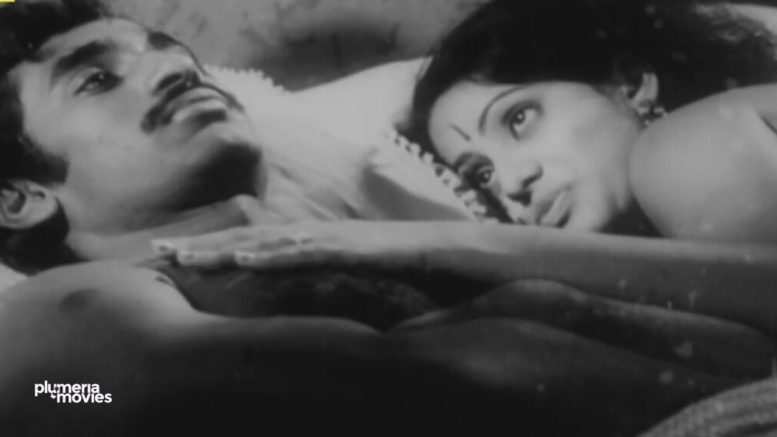KG. George’s debut film, ‘Swapnadanam: Journey through a Dream,’ transcends contemporary technology, utilizing the colors black and white to profile a multi-dimensional verse. The symbolic play of black and white in the narrative mirrors the intricacies of the human mind.
Unconventional Opening
The film opens on a beach with a man dressed in black and white, lying on seemingly white mud. The anonymous man, grappling with memory loss, seeks refuge in a mental hospital, rearranging muddled blocks of black and white. This unconventional sequence sets the mood for the film and foreshadows KG. George’s brilliance.
Bergmanesque Inspiration
KG. George draws inspiration from Ingmar Bergman, evident in the film’s nuanced exploration of dreams and reality. The recurring motif of black and white, the play with shadows, and meticulously staged dream sequences showcase George’s creative prowess.
Dream as Lexicon
Dream sequences become the lexicon of KG. George’s filmmaking, as indicated by the beautifully realized title ‘Swapnadanam.’ The film, originally named Palayalam, unfolds with psychological depth, exploring the conscious and subconscious states of the protagonist.
Gopi’s Psychological Journey
At the heart of the story is Gopi, concealing his true identity, Parameswaran, as Doctor Gopi. This psychological concealment is not an identity crisis but a coping mechanism for Gopi’s subconscious mind, distressed by a broken past and a moral obligation.
Relationships and Unraveling
Sumithra, an extrovert from a privileged family, likes Gopi, but his subconscious is entangled in a lost college love. The narrative unfolds Gopi’s upbringing by a single mother, shaping his effeminate nuances and introverted persona.
Unique Perspective on Relationships
The marital relationship between Gopi and Sumithra crumbles, narrated from a male perspective, offering a distinctive viewpoint on relationships. Gopi’s struggle with his past and the moral obligations adds layers to the exploration of human emotions.
Revelations and Discoveries
As the story unfolds, Gopi’s house becomes a backdrop for revelations and discoveries. Living with Sumithra, Rosy, and Rosy’s brother Mohan, Gopi’s life takes unexpected turns. Mohandas, portraying Gopi, becomes a remarkable discovery by KG. George.
Legacy of Malayalam Cinema
‘Swapnadanam’ adds to the legacy of Malayalam Cinema’s golden era in the 70s and 80s. KG. George’s authentic scrutiny of the human psyche sets him apart in a cinematic landscape emphasizing sociology, psychology, and the history of the native land.
Nightmares Resurface
Gopi remains tormented by chilling nightmares, with one particularly striking dream sequence taking place on the beach. This dream extends from a previous dissection hall scene, where Gopi attempts to bury his wife’s corpse. The beach, a recurring setting in daydreams, transforms as Gopi returns to dig the grave, only to find his ex-lover instead. Symbolically, this sequence encapsulates Gopi’s subconscious overpowering his conscious mind, revealing the haunting persistence of his past.
Intimate Ecstasy Amidst Chaos
A poignant scene in Swapnadanam unfolds at the brink of Gopi’s nervous breakdown, akin to a gentle breeze before a storm. This moment of physical ecstasy is artfully captured by KG. George, avoiding the pitfalls of vulgarity. As the narrative becomes dislocated, Gopi navigates through a nervous wreak, blurring the lines between daydreams, nightmares, and hallucinations. The film takes us back to the hospital, unveiling Gopi’s backstory and introducing a beautifully nuanced romance between Parameswaran and Kamalam, characterized by psychological depth.
Fugue and the Indefinite Journey
Diagnosed with fugue, Gopi experiences temporary memory loss and is relocated to a mental asylum. The film concludes with Gopi escaping from the asylum, returning home, and embarking on an indefinite journey on his motorcycle. The sun sets on the beach, offering an evocative backdrop to the open-ended voyage.
KG George’s Cinematic Innovation
Swapnadanam marks KG George’s introduction of a psychological and sensual film language to Malayalam Cinema. This groundbreaking approach potentially laid the foundation for the middle-stream cinema popularized by filmmakers like Padmarajan and Bharathan in the latter half of the 80s. George’s contribution to cinema often goes unsung, and Swapnadanam remains a testament to his inimitable craft.
Stellar Performances and Legacy
The film boasts fantastic performances from the lead cast, with Rani Chandra delivering a particularly standout and organic portrayal. Her effortless performance stands in contrast to Prema Menon’s more theatrical act in the same film. Swapnadanam continues to serve as a textbook example of psychological narratives in Malayalam Cinema and a lasting testament to KG George’s artistic legacy.

CA Student who’s enthusiastic about films.


Be the first to comment on "Swapnadanam: Sensuality and psychology of this dream land"